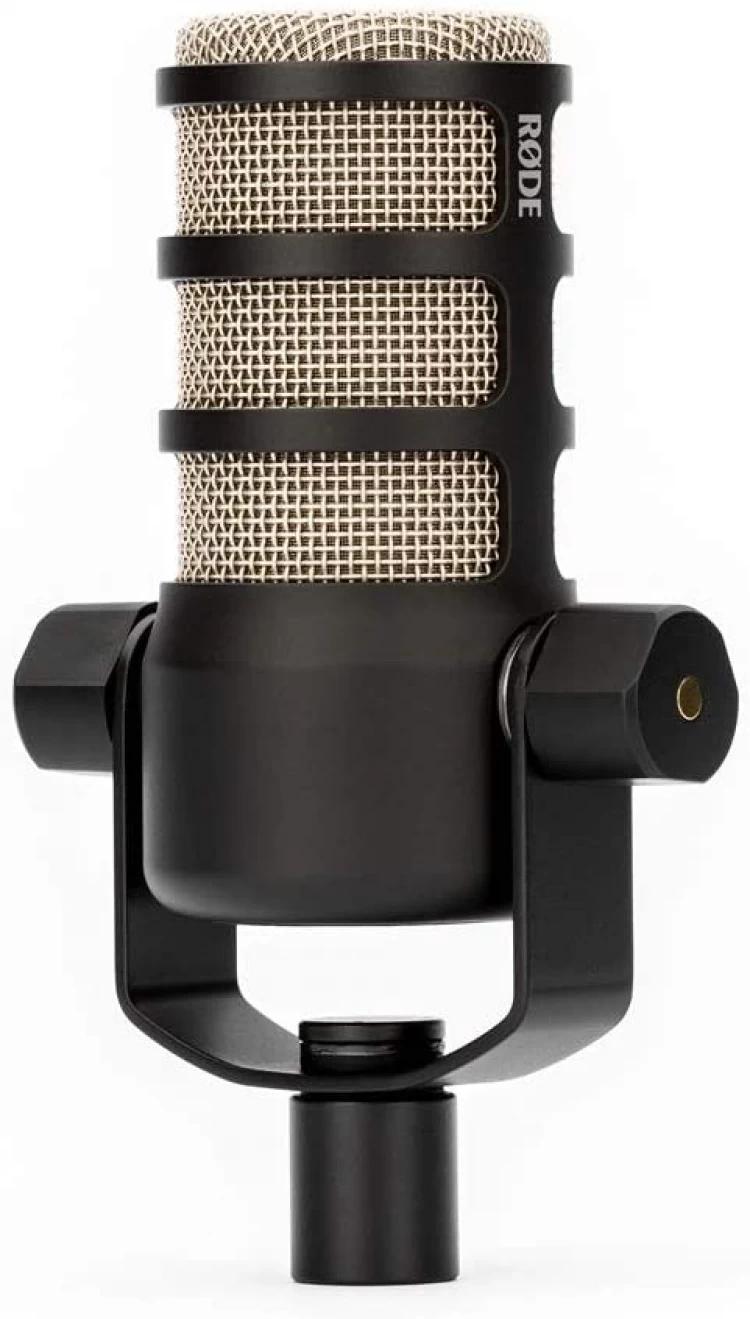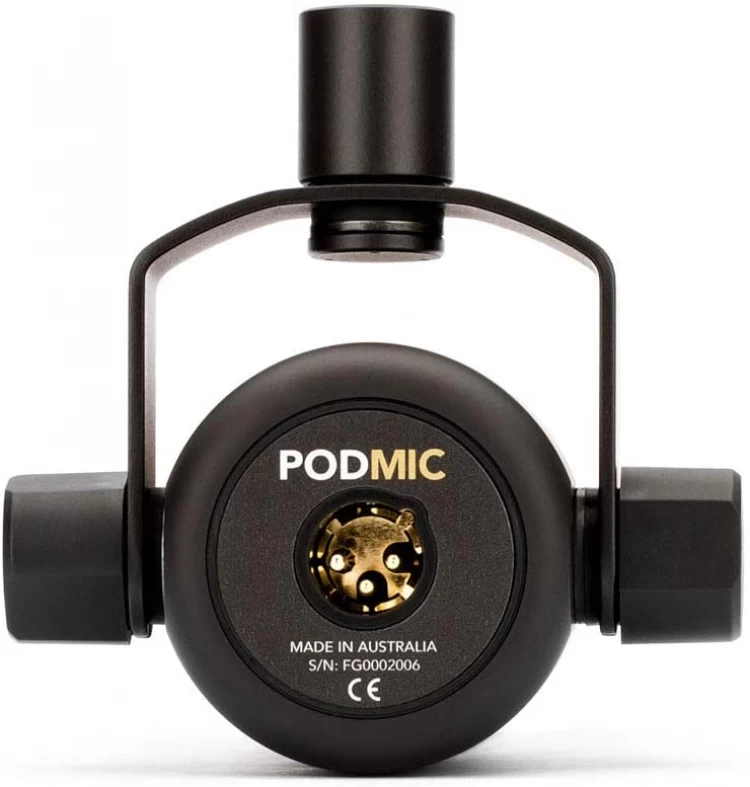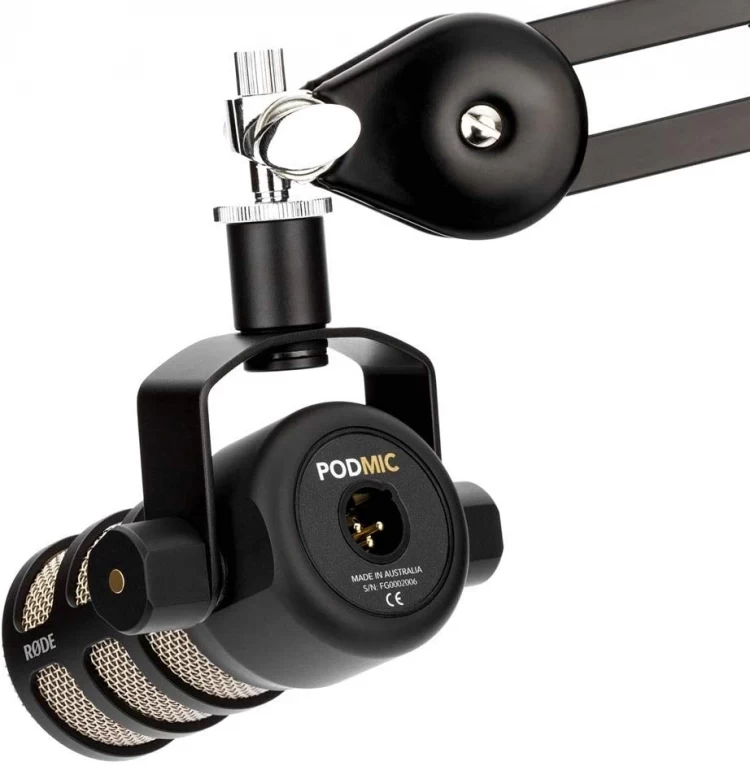Rode Podmic Review | Musician Nerd
Updated on Mar 16, 2022
Table of Contents
The Rode PodMic may be one of the coolest looking $100 microphones on the market, with its signature broadcasting capsule and vintage feel. This dynamic mic was specifically developed to be a podcasting microphone, as the name so clearly suggests. It has been optimized to be used with the Rodecaster Pro Podcast Production Studio, though certainly not required.

Rode PodMic Standing Vertically
Aside from the awesome aesthetics, the PodMic comes with the ability to angle the microphone capsule, offering a level of flexibility that many podcasters need, and quite frankly, anyone sitting down will need. We've tested this microphone on multiple types of stands, from boom-arms to verticals, and it has great flexibility.
We're pretty excited to see how this cool, vintage-looking broadcast microphone performs as we dive into the different applications for it. We've been on the hunt for a strong, versatile, and high quality budget dynamic microphone, and something tells me this microphone is going to impress.
Why It's Great
The Rode PodMic is incredibly durable due to the solid metal construction around the capsule, protecting it from any damage. The quality of this shell is quite impressive when you consider there are higher end microphones made with plastic that even us nerds have broken.

Rode PodMic Suspended From Stand
The Rode PodMic pairs beautifully with the RODE PSA 1 Swivel Mount Studio Microphone Boom Arm, which was created specifically for Rode's podcasting series of microphones. However, you shouldn't have difficulty setting up the Rode PodMic with other stands, as it conforms to the conventional 3/8 inch thread adaptors, but you'll want to find a stand that supports at least 2lb.
The Rode PodMic has an incredibly rich sound to it that was actually so good, I almost couldn't believe it. We review a lot of microphones in this price range, and they never sound this good. When I compare it to my Shure SM7B, which costs 4x as much, they sound scary similar! The Shure still comes out on top, with a bit more warmth and depth, but not 4x as much...

Rode Podmic XLR Port
Once you pair this XLR microphone with a powerful microphone preamp, and start working on the lows, mids, and highs, you'll be able to find this microphone's true potential. Similar to the Shure we've mentioned, we're able to make this podcasting microphone work great for recording music, and it could even work in a live setting, thanks to its unidirectional cardioid pattern.
The sound quality, durability, and weight of this affordable dynamic microphone easily meets the standards of a $350+ mic. Next we're going to explore if this podcasting mic can be used for anything else.
What It's Good For
What this dynamic microphone is good for may seem self-explanatory, being built for podcasting, but we would expand that to say it's great for any voice work.
The well-balanced sound that you get from the Rode PodMic, with the wide-range frequency response that we don't always see in dynamics, make this microphone perfect for anything from speaking to rapping, and perhaps even rock vocals.

Rode Podmic Tilted On Stand
The audio from this microphone is extremely crisp, and it has a few features to ensure top quality. The first is an internal pop-filter, which will block out your plosives, like the sound made from your P's & B's. They also include an internal shock mounting system to reduce vibrations, though it's not perfect. Internal shock mounting often works best for handheld microphones as opposed to desktop or stood microphones.
You're going to find a lot of uses for this mic, especially once you open its potential with a preamp. The versatility is unmatched, and we couldn't be more impressed with what we get out of it, for both music and voice application. But let's talk about what we don't like.
The Downsides
It's hard to really call this a downside, but it's going to be an issue for some people, so let's get into it anyway.
The Rode PodMic has a very low output, which means you'll likely need an intermediary device with (ideally) ultra-clean gain to boost. This is not uncommon at all in dynamic microphones, especially ones built for similar use, like the extremely popular Shure SM7B. We usually recommend using a preamp anyway, which can be tough for those on a budget, but finding the right settings can make a massive difference to your audio.
Pros & Cons
Pros
- Affordable
- Great Sound Quality
- Tough, Durable
- Feature-Rich
Cons
- Low Output
Best Used For
- Podcasts / Radio
- Streaming / YouTube / Twitch
- Recording Microphone
Alternatives
All in all, we're really big fans of the Rode PodMic, but it might not be perfect for everyone. For some people, a USB microphone is highly preferred. They're easier to use (plug-and-play) and often optimized for multiple use cases, using multi-directional polar patterns. For others, this microphone is above or below budget, so we'll look at some price alternatives as well.

JLab Audio Talk USB With Box Contents
The JLab Audio Talk is an awesome USB Microphone, offering plug-and-play capabilities, good sound, and comes at an affordable price. The Talk series features multiple models, ranging from $49 - $149. The $49 "Go" model is very compact, sounds great, and makes for a good low-end condenser desktop microphone.
If you're interested in one of those microphones, you can get a live price check here. You may also be interested in reading our review of the base model.

Rode Procaster Broadcast Dynamic Vocal Microphone
The big sibling in Rode's Podcast microphone series, the Rode Procaster is a bigger and better version of what we've just reviewed. This microphone makes a few changes, adding a mounting clip, and surprisingly weighing less than the smaller PodMic. The frequency response is also narrowed in a bit, which is not ideal but pretty common in dynamic microphones, as they tend to focus more on the mid-range, as opposed to condenser microphones that try and capture the full picture.
Summary
Overall, the Rode PodMic is definitely one of the best microphones we've ever reviewed. The quality for a $100 microphone is mindblowing, to say the least. We're big fans over here when it comes to microphones built just for podcasting or streaming or anything of that nature, and so to see one come in so affordable and meet our standards is great.
If it's not too bold of us to say, I would label the Rode PodMic as the affordable version of the Shure SM7B. Similar in style and both meet a high standard for this type of voice work. The quality is actually way more comparable than you'd think, considering the 4x price difference.
Let us know if you go out and buy one! Good luck.
Posted on Sep 29, 2020
Streaming Recording
Have questions for us? Email us at info@musiciannerd.com
